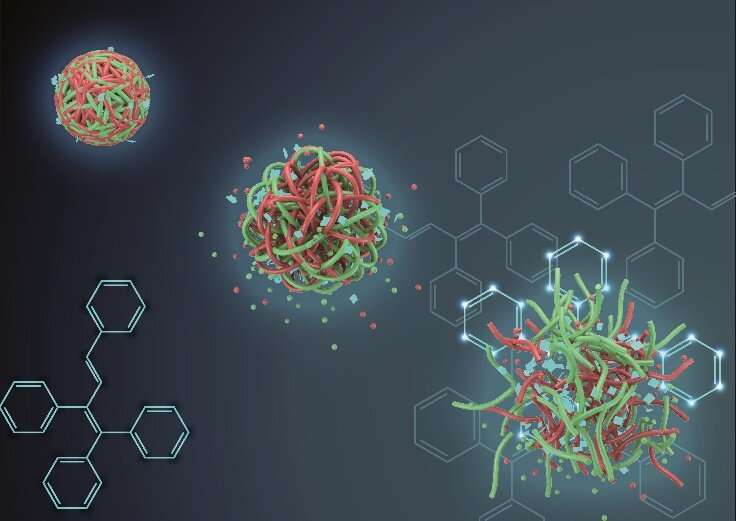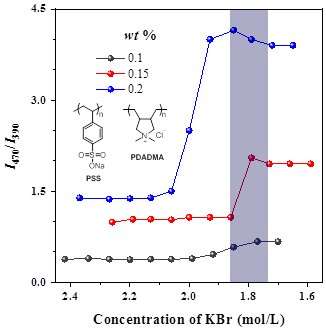A new member in AIE family

Three molecules based on tetraphenyl-1,3-butadienes (TPBs) showed aggregation-induced emission (AIE) characteristics and sensitive conformational properties in which the emission wavelengths could be changed in different states. These characteristics are attributable to the phenyl groups at the 4-position of the 1,3-butadienes. Furthermore, the TPBs could be used for sensitively probing some weak interactions by changing the emission wavelengths due to their conformation-sensitive properties. TPBs may become a new star in AIE research fields.
Aggregation-induced emission (AIE) was first reported by Tang's group in 2001. Many research efforts have been devoted to the exploration structure-property-application of AIE. The focal points and hot spots of AIE are to design new structural systems and to illuminate the relationship of structural properties. Many new compounds with AIE characteristics have been designed and synthesized to enrich the members in AIE family. However, there are almost no reports thus far on the analog 1,1,2,4-tetraphenyl-1,3-butadiene (TPB) that was studied in AIE fields.
Recently, Professor Yuping Dong's group, from Beijing Institute of Technology, demonstrated a new member of AIE family: TPB with conformational sensitivity. The experimental results show that TPB-1, TPB-2 and TPB-3 have typical AIE characteristics, that is, there is no fluorescence in the solution, and strong fluorescence in the aggregate state. Unlike the existing AIE molecules, the TPB derivative does not have a strong electron-withdrawing electron group. The emission wavelength of the aggregated state is nearly 80 nm larger than that of the molecular state. All the experimental results indicated that 4-position of arylene group had a sensitively changing conformation in different state, which resulted in the emission wavelength movement.
Conformational sensitivity was used to monitor the critical transition point of polyelectrolyte complexes of PSS/PADAMA in different KBr concentration. Inserting TPB-3 molecule into PSS/PADAMA system with a mass fraction of 0.15% detected the critical transition point of PSS/PADAMA polyelectrolyte complexes in about 1.8 mol/L of KBr.
-

Synthetic route to TPBs Credit: ©Science China Press -

The PL intensity ratio of PEC-TPB at 470 and 390 nm (I470/I390) with different concentrations of KBr at 0.1%, 0.15% and 0.2% TPB-3 in PEC Credit: ©Science China Press
More information: Yahui Zhang et al, Conformational sensitivity of tetraphenyl-1,3-butadiene derivatives with aggregation-induced emission characteristics, Science China Chemistry (2019). DOI: 10.1007/s11426-019-9576-7
Provided by Science China Press




















